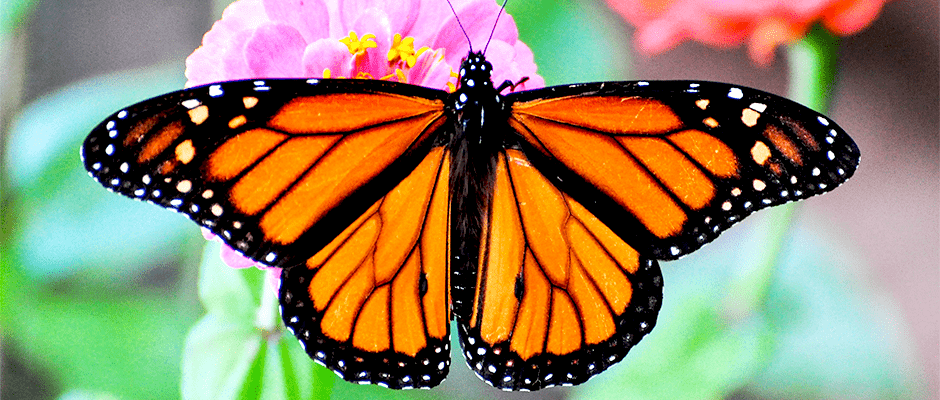Share this article
Monarch butterfly designated as a national priority species
On January 13, the monarch butterfly (Danaus plexippus) was designated as a new national priority species of Working Lands for Wildlife (WLFW), a partnership between the U.S. Department of Agriculture’s Natural Resources Conservation Service and U.S. Fish and Wildlife Service.
With this designation, the monarch butterfly will join species, like the New England cottontail (Sylvilagus transitionalis) and golden-winged warbler (Vermivora chrysoptera), whose habitat needs are representative of healthy, functioning ecosystems, and where conservation efforts benefit a wide variety of species. In the agencies’ partnership, NRCS provides technical and financial assistance to private landowners interested in enhancing habitat for these species through the Environmental Quality Incentives Program, Agricultural Conservation Easement Program, and Conservation Stewardship Program, which are all funded under the Farm Bill. USFWS’ role in the partnership ensures regulatory predictability, which allows participating landowners to continue working their land with NRCS conservation systems in place, regardless of the monarch’s legal status under the Endangered Species Act.
Conservation plans are targeted for a 10-state area in the Midwest and southern Great Plains, including Illinois, Indiana, Iowa, Kansas, Minnesota, Missouri, Ohio, Oklahoma, Texas, and Wisconsin. These states represent the core of the monarch’s migration route and breeding habitat. NRCS will work with participating landowners to plant and enhance stands of milkweed and other nectar-rich plants. Milkweed, the primary food source for monarchs, helps to support other pollinator species and provides habitat for agriculturally-beneficial insects.
“Producers can make simple and inexpensive tweaks on working lands that provide monumental benefits to monarch butterflies and a variety of other insects and wildlife,” said NRCS Chief Jason Weller. “By adding the monarch to Working Lands for Wildlife, we can accelerate conservation for the species at the heart of its migration corridor.”
Both USFWS and NRCS have committed significant funding to monarch conservation efforts and contribute to a multi-agency, international strategy to reverse the monarch’s population decline in North America. According to USFWS, monarch populations were estimated at one billion butterflies in 1995 and have decreased to an estimated 34 million. The U.S. has a goal of increasing the eastern population to 225 million butterflies by 2020, indicated in the National Strategy to Promote the Health of Honey Bees and Other Pollinators.
USFWS is also working with partners, including the National Fish and Wildlife Foundation, National Wildlife Federation, and the Mexican and Canadian governments to leverage resources and investments to support and implement conservation actions throughout North America.
Read TWS’ Standing Position on Environmental Quality through Resource Management.
Header Image: ©Peter Miller








